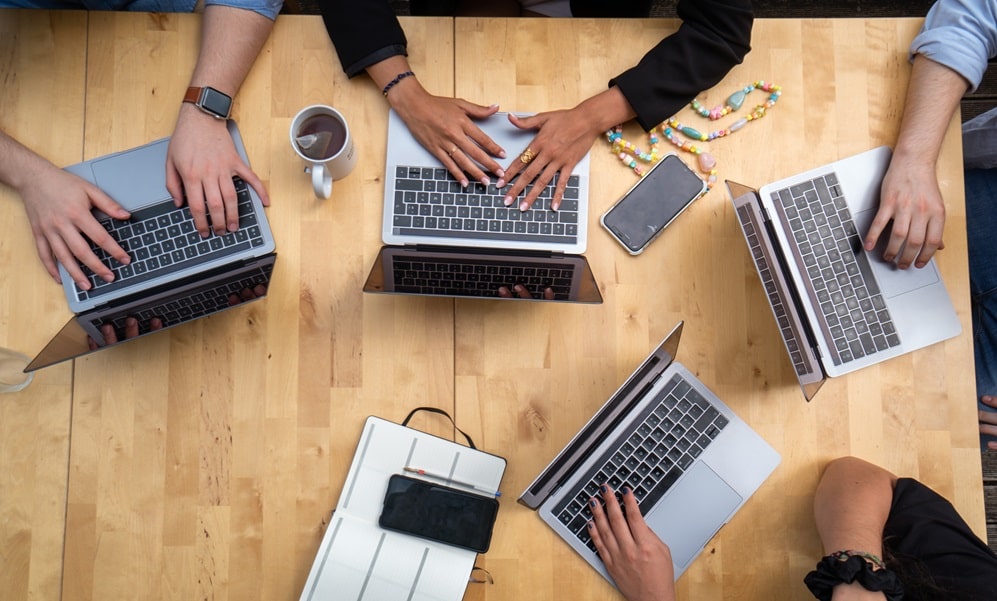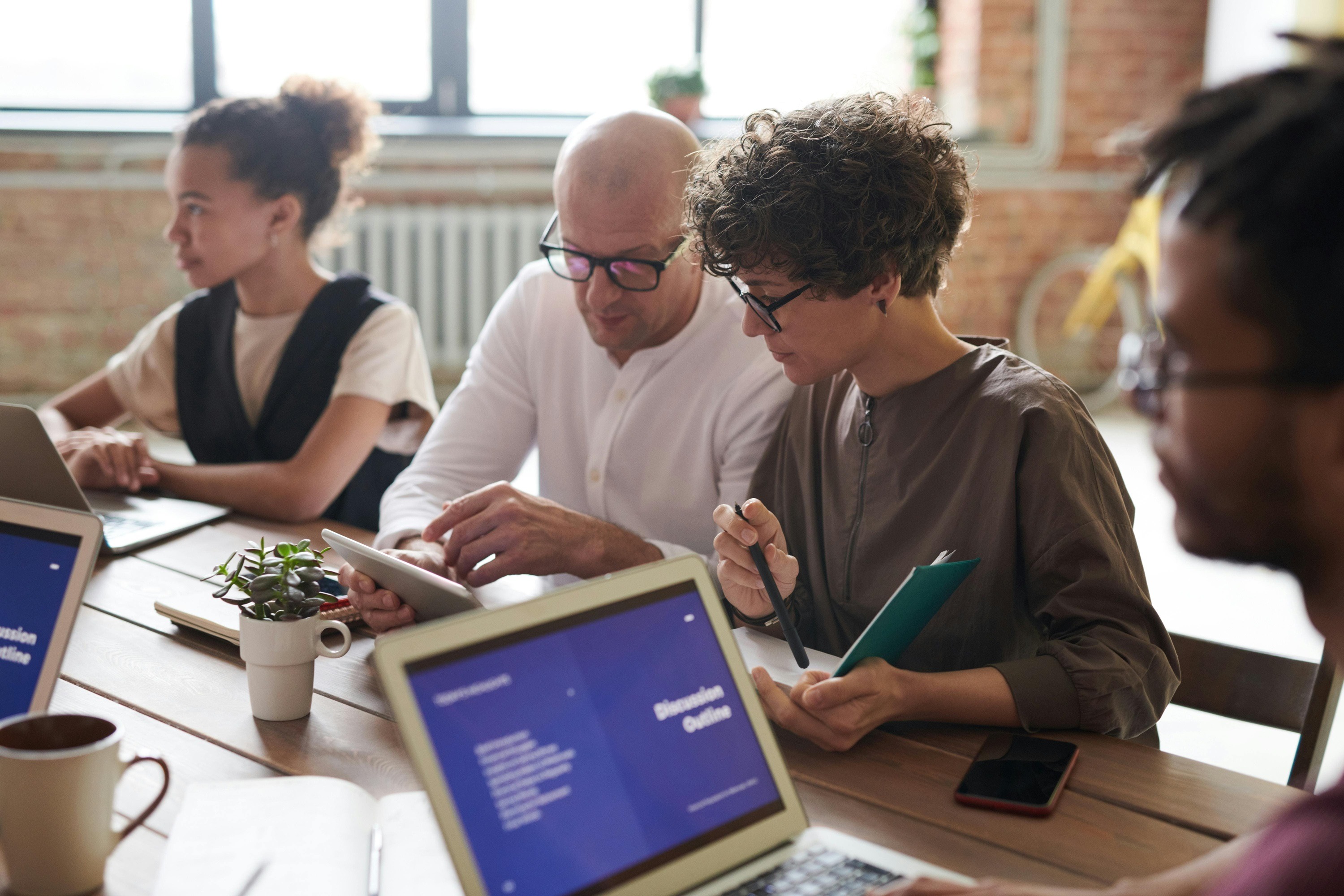Reduce digital overload
How to Reduce Digital Overload?
In the age of digital work, collaborative tools have become essential. Slack, Trello, Microsoft Teams, Acollab… Every day, millions of people use these platforms to communicate, organize, and move forward with their projects. However, behind this apparent efficiency lies a more complex reality: digital overload. Constant notifications, forced multitasking, a constant sense of urgency… These side effects directly impact our mental health.
So how can we find balance? How can we continue using collaborative tools without sacrificing our psychological well-being?

Collaborative tools: a necessary revolution
Collaborative tools have transformed the way we work:
- Instant access to information: no more waiting for an email or an in-person meeting.
- Asynchronous work: teams spread across time zones can collaborate seamlessly.
- Simplified project management: tasks, deadlines, and responsibilities are centralized.
- Smooth communication: instant messaging, video conferencing, and document sharing.
In a context of remote or hybrid work, tools like Acollab are no longer a luxury — they’re a necessity. But it’s crucial to know how to use them wisely to avoid digital overload.
Understanding digital overload
Digital overload occurs when the amount of digital information and requests exceeds our ability to process them effectively. Several factors related to digital tools are responsible for this:

Constant notifications
Each notification, each vibration stimulates our brain and disrupts our focus. According to a study from the University of California, it takes an average of 23 minutes to regain concentration after an interruption.
Multiplication of communication channels
Between Slack, Teams, emails, and professional WhatsApp, it’s becoming difficult to keep track of all the conversations. This multitude of channels leads to significant cognitive fatigue.
Pressure of immediacy
Receiving a message at 10 p.m. and feeling compelled to reply creates an invisible but very real pressure, blurring the line between work and personal life. Similarly, we receive emails throughout the day. Each notification strongly encourages us to read and respond immediately, leading to constant distraction and a loss of focus.
Toxic multitasking
Digital tools push us to juggle multiple tasks at once. Yet research shows that multitasking can reduce productivity by 40% and significantly increase stress levels.
The effects of digital overload on mental health

Digital overload is far from harmless. Its impact on our mental health is significant and multifaceted:
- Anxiety: Fear of missing out on important information.
- Digital burnout: Exhaustion caused by constant exposure to technological tools.
- Sleep disruption: Screens and notifications interfere with natural sleep patterns.
- Emotional isolation: Virtual interactions are often less fulfilling than face-to-face conversations.
- Decreased self-esteem: Struggling to keep up with the constant flow of messages and tasks can lead to feelings of inadequacy.
These risks highlight the importance of managing our collaborative tools consciously and intelligently.
Towards a healthy use of collaborative tools: best practices and solutions

How can we reduce digital overload in practical terms? Here are some effective action steps:
Rethinking company culture
- Encourage asynchronous communication: not everything requires an immediate response.
- Set clear working hours: limit requests outside of work time.
- Train teams on mindful use of digital tools.
Smartly configure your notifications
- Disable non-essential notifications. For example, on Acollab, you can set a daily reception time to receive all updates at once. You can also choose which important notifications you want to receive.
- Schedule specific time slots to check messages.
- Use the “Do Not Disturb” mode during periods of deep focus.
Centralize communication
- Limit the number of tools used by leveraging a collaborative platform. With Acollab, you get a project management tool, shared calendar, file management, and even messaging—all in one place. It’s the perfect way to centralize everything your team needs to work efficiently.
- Clarify which channels are dedicated to each type of communication (Slack for quick chats, email for formal communications).

Establish disconnection rituals
- Screen-free time at the start and end of the day.
- Regular “zero notification” days.
- Encourage digital breaks throughout the day.
Of course, these tips may vary depending on the role and responsibilities.
Focus on digital ergonomics
- Use tools that offer a clear and intuitive interface.
- Automate repetitive tasks to reduce mental load.
- Conduct regular audits of the tools used to ensure their relevance.
Examples of collaborative tools that promote mental health
Some tools include features designed to limit digital overload:
- Slack: ability to schedule absences, “do not disturb” mode, deferred reminders.
- Acollab: clear task boards, customizable notifications, option to disable all notifications, asynchronous project management, centralization of multiple tools to avoid fragmentation.
- Notion: centralization of documents, databases, and schedules to reduce dispersion.
Choosing well-designed tools can make a big difference in the digital work experience.

The importance of self-discipline and self-awareness
Even the best tools cannot compensate for unconscious use. Here are some tips to regain control:
- Regularly ask yourself: Does this tool really make my life easier?
- Listen to warning signs: irritability, fatigue, difficulty concentrating.
- Set personal rules: no push notifications on the phone, check emails a maximum of twice a day, etc. Personally, I dedicate two time slots per day to reading and sorting my emails.
Managing digital overload is as much about the choice of tools as it is about your inner mindset.
Conclusion
Collaborative tools are both a blessing and a challenge for mental health. While they offer increased flexibility and productivity, improper use can lead to genuine digital overload.
To get the most out of them without sacrificing well-being, we need to rethink our relationship with technology, implement healthy practices, choose ergonomic tools, and foster a company culture that respects human rhythms.
Ultimately, it’s not about fleeing digital technology, but learning to use it consciously and mindfully—so that technology remains an ally.
Feel free to schedule a demonstration of the Acollab tool right here.
